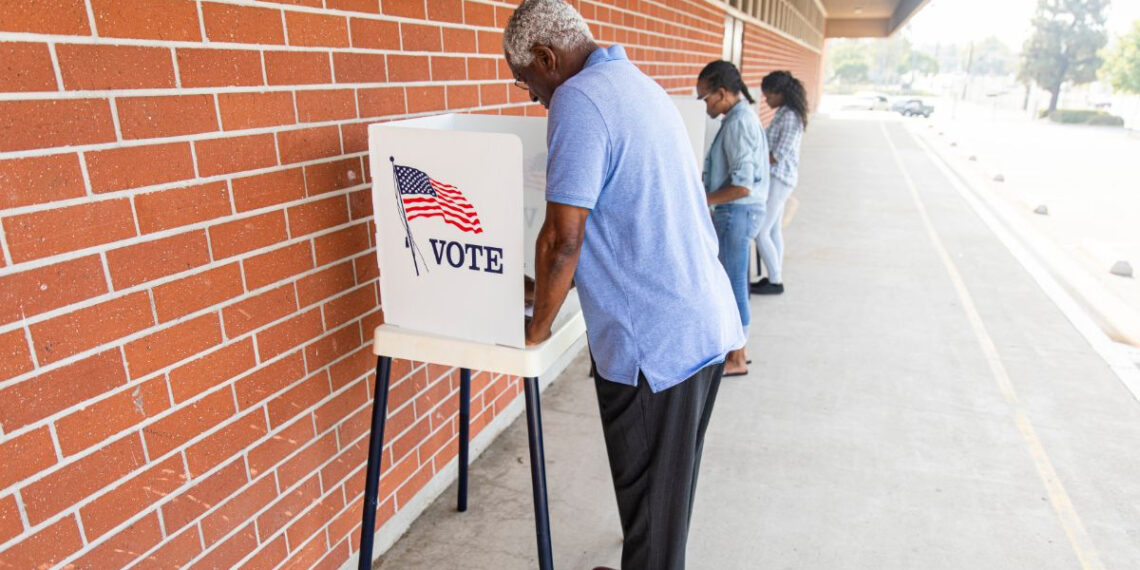Legal back and forth
The Supreme Court in early 2022 had blocked the generally conservative 5th Circuit’s finding in Robinson v. Ardoin while it considered a similar situation in Alabama, the case of Allen v. Milligan.
This “stay” allowed those now-invalidated Louisiana maps to be used in the 2022 midterm elections.
In Alabama, only one of the state’s seven Congressional districts had been Black majority although the 2020 Census determined that 27 percent of the state’s population is Black.
And in June of last year, the Supreme Court, to the surprise of many, ruled in Allen v. Milligan that the maps Alabama was using violated the Voting Rights Act.
Shortly thereafter, the Court lifted its stay of the Robinson v. Ardoin decision, which meant that the state Legislature then had to enact new maps to satisfy the court that its Congressional districts no longer purposefully minimized Black voting rights.
For a third time, a special session of the Louisiana Legislature was convened for this purpose. On January 17, despite hours of mostly supportive testimony, it summarily rejected maps the Power Coalition had painstakingly drawn and proposed that would satisfy the court’s requirements.
It seemed then that Louisiana might be about to follow Alabama’s lead in rebuffing court orders to enact redrawn maps that created at least a second “opportunity district” for Black voters.
“They just wanted to have the last say before someone did it for them,” Pollard said. “They wanted control.”
In Louisiana’s case, had it not done so by the end of January, the court would have imposed a map that did, as happened in Alabama in October.
But the Legislature ultimately approved a new map on January 19 that seems to meet the court’s requirements and will be in place for its March 5 primary election.
And the new map for Alabama, said Anneisha Hardy, executive director of Alabama Values, “does settle what the court called for them to do.”
When the March 5 Super Tuesday election comes around, she said, “we’ll be voting on that map.”
Voter education key
Every 10 years, the US Census attempts to count everyone living in the country. A key takeaway from the data the Census gathers is that states’ Congressional delegations are re-sized to make them each represent the same number of people.
It’s the one-person-one-vote principle in action.
States can either gain or lose representatives if their population has changed, and the maps of the districts those officials represent within each state are redrawn to make their population sizes equal.
And almost without fail, whatever political party happens to be in power in each state when those Census numbers are finalized tries to “gerrymander” the new boundaries by drawing them in ways that will work to their advantage.
That process is slowly changing across the country as individual states adopt various forms of independent redistricting teams, but for now, it’s still highly politicized.
In 2013, in another case originating in Alabama, Shelby v. Holder, the Supreme Court severely weakened the landmark Voting Rights Act of 1965, one of the key accomplishments of the Civil Rights Movement of that era.
That ruling eliminated the “preclearance” provisions of the VRA’s Section 5 that required states with a history of racially discriminatory voting practices to get Justice Department approval before making any changes to their system.
This finding that we are now in a “post racial era” unleashed a torrent of new voting rules that seemed to fly in the face of such reasoning.
Georgia, for example, banned “Souls to the Polls” programs that transported churchgoers to polling places on early-voting Sundays. It also made it illegal to provide refreshment to voters waiting to vote, perhaps in long lines in locales where the number of polling places and their hours of operation were reduced. For now, Hardy said, the work at hand is to educate voters on such things as making sure their registration is up to date, that they’re aware of which district they’re now part of, and where to vote.

































